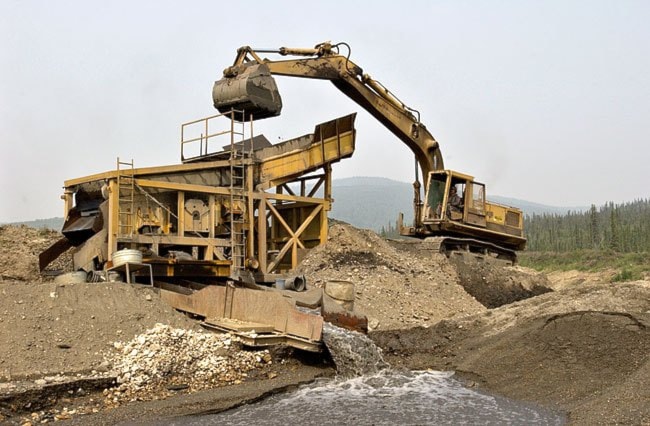Whether it’s bulldozing trees or setting ponds on fire to rock music, reality television shows are making a mockery of the placer mining industry in the territory, warns the president of the Klondike Placer Miners’ Association.
“Our issue is the attitude towards the law and regulations that they portray - it’s very cavalier,” said Stuart Schmidt.
“It’s important to us what people think about it. It’s not like the Wild West, where we can just do anything we want.”
Schmidt, who admits he doesn’t watch the shows on a regular basis, said he’s been made aware of scenes that depict reckless activities.
One scene in an episode of Gold Rush shows a miner pouring gasoline on a pond and setting it on fire, for good luck.
“It flies in the face of all the regulations for safe fuel handling, and also flies in the face of the Yukon Workers’ Compensation Health and Safety Board regulations,” he said.
“We have a unique set of rules and regulations that we live by, and we’ve been negotiating them for the past 30 to 40 years with government and environmental groups.”
Schmidt said the mining industry has had a tough time adjusting to increased regulations over the years.
A once-strained relationship with the Department of Fisheries and Oceans has greatly improved over the years, but it took a lot of work, he said.
“It’s concerning if this working relationship was to be put in jeopardy by these shows,” he said.
But when representatives from both shows first came to the territory, they promised to follow the rules and make sure reclamation work was shown, he said.
“That’s their business, to reassure you, and they’re very good at it,” he added.
Mines Minister Scott Kent said he shares Schmidt’s concerns. In a letter last month, he said the department regularly monitors and enforces the industry’s regulations, and conducted 415 inspections of operating placer mines in 2014.
He also said the department has received “numerous complaints” about the activities shown on the programs since they began.
Last year there were 246 inspections of placer operations in the Dawson Mining District alone, according to Sue Thomas, a spokesperson for the department.
The department received about 15 written complaints about the shows last year, she said in an email. Follow-ups include a review of the show to verify the complaint.
“Viewers might see what they perceive to be a problem but don’t also see the required mitigations that were undertaken to make the activity compliant with the mining and water licences,” she wrote.
For example, one complaint involved machinery being operated in a watercourse. What wasn’t shown was a downstream settling pond for the sediment stirred up by the activity.
And that’s something Schmidt would like to see a lot more of on the shows.
“That’s our aim, to give it a more balanced approach,” he said.
“Try to show reclamation being done or scenes of places that have been reclaimed. If you’re going to do this, show the whole picture.”
Neither Yukon Gold nor Gold Rush representatives responded to interview requests by press time.
Contact Myles Dolphin at
myles@yukon-news.com
